
by Dee Harlow (Laos) | May 29, 2014 | Awareness, Breastfeeding, Food, Health, Humanitarian, Laos, Maternal Health, Millennium Development Goals, Nutrition, Uncategorized, World Voice, Younger Children
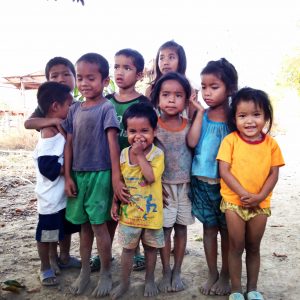 While I still have the opportunity to write another post for the WMB community before leaving Laos later this year, I feel compelled to tell you about child nutrition and the problem of stunting in Laos because stunting is a seemingly invisible problem that can go unnoticed unless special attention is drawn to highlight the issue.
While I still have the opportunity to write another post for the WMB community before leaving Laos later this year, I feel compelled to tell you about child nutrition and the problem of stunting in Laos because stunting is a seemingly invisible problem that can go unnoticed unless special attention is drawn to highlight the issue.
Ethnically, most Southeast Asian people are shorter and have a smaller frames than most other races throughout the world. This fact makes it easy to say that Lao babies and children tend to be small or smaller because of their race.
Yet at first glance Lao children appear to be healthy (and super cute), a closer look and personal interaction will almost always reveal that the children are a few years older than what you had first assumed. I recently met an adorable girl in a northern village at a school where I delivered books by boat since there is no road access to her village. Upon speaking with her (in Lao) I was impressed by how well behaved, articulate and “mature” she was for what I assumed to be a 6-year old. (I have two 4-year old twins so I was instantly optimistic about their potential in just two short years to be as well behaved as this girl.) She turned out to be 10-years old. This has happened time and time again to me, to my colleagues, and to many newcomers to Laos.
Lao children are among the most undernourished in Southeast Asia with 44% stunting of children under 5-years old. It is the single largest contributor to infant and child mortality in the country with 59% of all child deaths related to nutritional deficiencies. Chronic malnutrition predisposes children to higher morbidity and mortality, lower educational attainment, and reduced workforce productivity.
For a country experiencing rapid economic growth and increasing income disparities, fierce external human resource competition puts the country at risk of leaving a majority of the Lao population behind others who will be more able to keep apace. Stunting is a problem that needs be addressed for the immediate wellbeing of Lao children and to be resolved for the future potential of the Lao people.
The Lao government is working closely with experts and development partners on how to tackle this important issue. It is not easy. Poor breast-feeding and weaning practices are widespread. Almost all mothers give food supplements (such as chewed glutinous rice), and pure water, to infants within a few weeks of birth. Harmful practices (such as discarding colostrum) and other food taboos for pregnant women reduce disease resistance for newborns and increase fetal undernutrition. Micronutrient deficiencies, inadequate intake of vitamin A, anemia and iodine deficiency, all further hinder child development.
The current health system is not only faced with challenges of delivering micronutrients, immunizations and necessary vitamins to the most vulnerable population, but they are additionally burdened by the daunting task of changing people’s behaviors to improve dietary habits, increase nutritional intake, and overcoming cultural belief and religious belief obstacles to improved nutrition status among rural and multi-ethnic communities. The task is daunting.
What is being done and what needs to be done?
There are some great organization here making slow but successful strides on a small-scale basis. UNICEF, WFP, IFAD, Save the Children, the Scale Up Nutrition initiative and others who are collaborating closely with government health officials, but resources are scarce, especially in an often overlooked country like Laos.
- We can channel financial support to these organizations for their work on nutrition in Laos.
- We can lobby our governments to increase foreign assistance resources to address the poor state of healthcare in Laos (e.g., Laos is not one of the United States’ ‘priority countries’ receiving Global Health Initiative (GHI) funding. Ask U.S. representatives, Why not?)
- We can voice our concern to private and public interests who are taking advantage of opportunities in Laos to improve their social welfare practices by investing in better healthcare in communities where they pursue their business interests.
- We can ask the question to anyone willing to listen about who should be accountable to improving the welfare of children beginning their lives under such great odds in Laos.
Hopefully someday, someone will listen and take action.
This is an original post to World Moms Blog by our mother of twins writer, Dee Harlow in Vientiane, Laos. You can always find her writing on her blog, Wanderlustress.
Photo credit attributed to the author.
One of Dee’s earliest memories was flying on a trans-Pacific flight from her birthplace in Bangkok, Thailand, to the United States when she was six years old. Ever since then, it has always felt natural for her to criss-cross the globe. So after growing up in the northeast of the US, her life, her work and her curiosity have taken her to over 32 countries. And it was in the 30th country while serving in the Peace Corps in Uzbekistan that she met her husband. Together they embarked on a career in international humanitarian aid working in refugee camps in Darfur, Sudan, and the tsunami torn coast of Aceh, Indonesia.
Dee is now a full-time mother of three-year old twins and continues to criss-cross the globe every two years with her husband who is in the US Foreign Service. They currently live in Vientiane, Laos, and are loving it! You can read about their adventures at Wanderlustress.
More Posts

by Elizabeth Atalay | May 13, 2014 | 2014, Economy, Education, Environment, Ethiopia, Girls, Government, Health, Human Rights, Humanitarian, International, Maternal Health, Natural Disaster, Poverty, Social Good, Vaccines, World Moms Blog
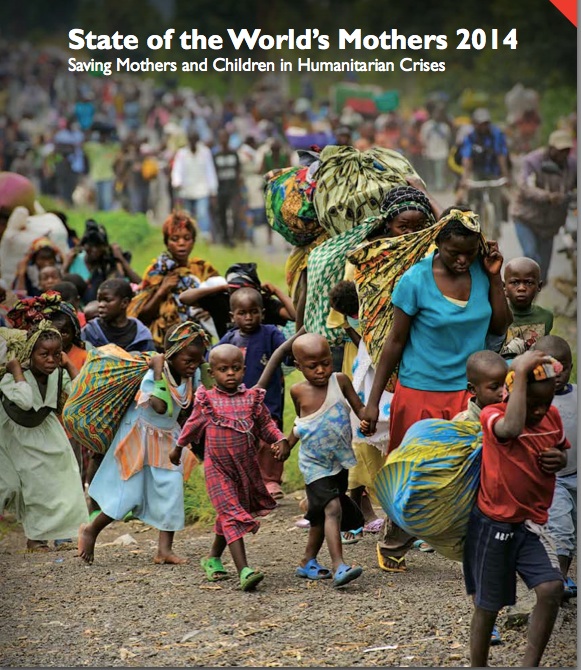
State of the Worlds Mothers Report Cover Photo By Phil Moore
The 15th annual State of the World’s Mothers Report was released last week by Save The Children, just in time for Mother’s Day, and World Moms Blog was there at the launch. The focus of the 2014 report is on saving mothers in humanitarian crisis, and the launch of the report in New York City was co-hosted by the Permanent Mission of the Philippines to the United Nations. In his welcome address to the room Permanent Representative H.E. Mr. Libran Cabactulan of the UN Mission of the Philippines acknowledged from first hand experience, that women and children suffer the most in crisis situations.
The report notes that worldwide women and children are up to 14 times more likely than men to die in disaster. In fact it is no surprise that also according to the report more than half of all maternal and child deaths world-wide take place in countries suffering conflict or natural disasters. As Werner Obermeyer, Deputy to the Executive Director of the WHO office to the UN stated, It is not the armed component in conflicts we are worried about, it’s those who are suffering from the armed component.
The purpose of the annual report is to further the mission of Save The Children in protecting the worlds most vulnerable mothers and children. The State of the World’s Mothers report does so by highlighting where we are failing, what effective solutions need to be put in place, and recommended policy changes towards progress. Despite the fact that 80% of the countries are not on target for achieving MDG 4 and 5, maternal and child health goals, the extreme progress seen in other countries previously failing, tells us that it is possible.
Ethiopia for example has reduced its risk of maternal death more than any other African country, by nearly two-thirds. H.E. Mr. Tekeda Alemu of Ethiopia stated that the progress there was due to a well crafted policy based on the participation of people on the local level. 48,000 health extension workers were fanned out throughout the country to mobilize women volunteers in what they called the Women’s Development Army to reach remote villages. Afghanistan has also cut maternal death rates by 60-70 percent, moving up 32 places on the Mothers’ Index Rankings of the best and worst countries in which to give birth. This proves that the combined investment of minds and funding works. If these countries with terrible track records have been able to make such significant improvements, there is no reason we can not see this type of progress universally with proper programs and support.
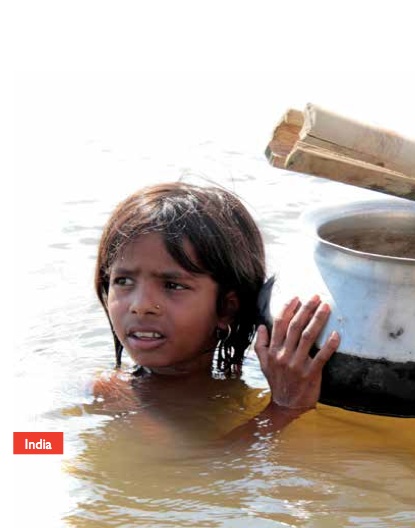
Photo Credit: Save The Children
Climate change is the wild card that threatens even the countries that have made the most progress in maternal and child health. Climate related disasters and extreme weather are factors that can cause severe set backs in development.
The recommendations of the report call for a collaboration between governments, donor countries, international organizations, private sector and civil society to take responsibility, and each do their part to ensure mothers, and children in crisis situations have the best chance to survive, and thrive. Here is what we need to do:
1. Ensure that every mother and newborn living in crisis has access to high quality health care
2. Invest in women and girls and ensure their protection
3. Build longer term resilience to minimize the damaging effects of crises on health.
4. Design emergency interventions with a longer term view and the specific needs of mothers and newborns in mind.
5. Ensure political engagement and adequate financing, coordination and research around maternal and newborn health in crisis settings.
Save The children’s 15th annual State of the Worlds Mothers report comes at a pivotal moment in history, when humanitarian crises have focused a spotlight like never before on the needs of mothers and children who are struggling to survive. With record numbers of people displaced by war and conflict and increasingly severe natural disasters causing unspeakable destruction, it is clear we must do more to help the worlds poorest and most vulnerable families. We must give mothers the support they need to keep their children safe and healthy, even in the darkest times. -Carolyn Miles, President and CEO of Save The Children USA
You can read the State of the Worlds Mothers report in full here. See where your country falls on the Mothers’ Index Rankings here.
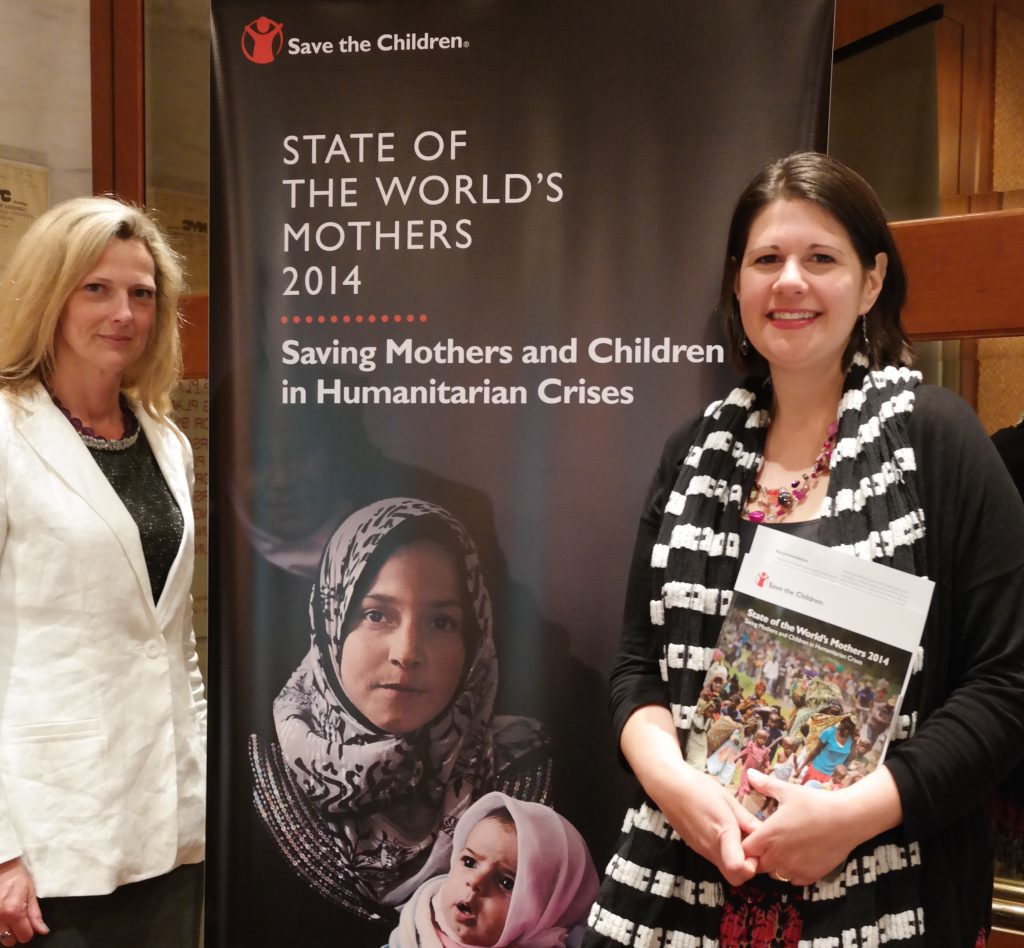
World Moms Blog Founder Jennifer Burden and Senior Editor Elizabeth Atalay at the State of the Worlds Mothers report launch in NYC.
This is an original post written for World Moms Blog by Elizabeth Atalay of Documama.

Elizabeth Atalay is a Digital Media Producer, Managing Editor at World Moms Network, and a Social Media Manager. She was a 2015 United Nations Foundation Social Good Fellow, and traveled to Ethiopia as an International Reporting Project New Media Fellow to report on newborn health in 2014. On her personal blog, Documama.org, she uses digital media as a new medium for her background as a documentarian. After having worked on Feature Films and Television series for FOX, NBC, MGM, Columbia Pictures, Warner Brothers, 20th Century Fox, and Castle Rock Pictures, she studied documentary filmmaking and anthropology earning a Masters degree in Media Studies from The New School in New York. Since becoming a Digital Media Producer she has worked on social media campaigns for non-profits such as Save The Children, WaterAid, ONE.org, UNICEF, United Nations Foundation, Edesia, World Pulse, American Heart Association, and The Gates Foundation. Her writing has also been featured on ONE.org, Johnson & Johnson’s BabyCenter.com, EnoughProject.org, GaviAlliance.org, and Worldmomsnetwork.com. Elizabeth has traveled to 70 countries around the world, most recently to Haiti with Artisan Business Network to visit artisans in partnership with Macy’s Heart of Haiti line, which provides sustainable income to Haitian artisans. Elizabeth lives in New England with her husband and four children.
More Posts

by World Moms Blog | Apr 30, 2014 | Maternal Health, World Motherhood
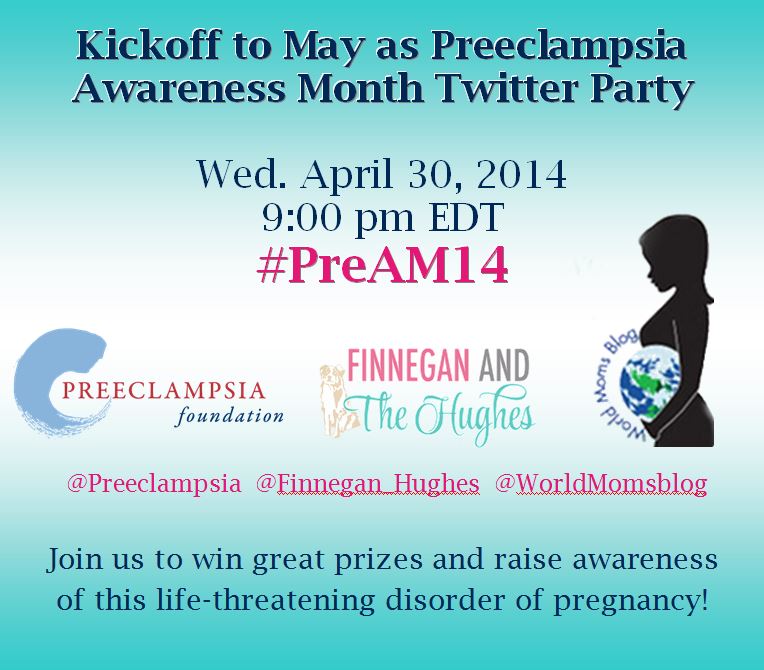
Have you ever had preeclampsia? Or know someone who did? Come learn more and help us raise awareness on this rapid disorder that affects moms and babies! Sarah Hughes, now a World Moms Blog contributor, once wrote a guest post for World Moms Blog, “What is Preeclampsia?”. We are honored to be holding a second annual twitter party with Sarah and the Preeclampsia Foundation to help raise awareness for maternal health!
World Moms Blog is an award winning website which writes from over 30 countries on the topics of motherhood, culture, human rights and social good. Over 70 international contributors share their stories from around the globe, bonded by the common thread of motherhood and wanting a better world for their children.
World Moms Blog was listed by Forbes Woman as one of the "Best 100 Websites for Women 2012 & 2013" and also called a "must read" by the NY Times Motherlode in 2013. Our Senior Editor in India, Purnima Ramakrishnan, was awarded the BlogHer International Activist Award in 2013.
More Posts

by Olga Mecking | Apr 21, 2014 | 2014, Awareness, Being Thankful, Bilingual, Communication, Family, Health, Humanity, Humor, Kids, Language, Life Balance, Maternal Health, Motherhood, Netherlands, Parenting, Siblings, World Motherhood, Younger Children
 One of my very favourite human qualities is a sense of humour. I must confess that I sometimes find people lacking this wonderful quality, as boring. It isn’t nice of course but I believe a sense of humour is paramount to any human’s well being or even survival. Especially if you’re a mom.
One of my very favourite human qualities is a sense of humour. I must confess that I sometimes find people lacking this wonderful quality, as boring. It isn’t nice of course but I believe a sense of humour is paramount to any human’s well being or even survival. Especially if you’re a mom.
I love all kinds of humour: simple, sophisticated, absurd, or even black humour. By the latter, I mean of course, serious matters that are funny.
When my days are filled with screams and cries and tantrums, the only thing that keeps me afloat is laughing about it. And when I share my pearls of wisdom on Facebook, not only does it make me feel better, it makes others feel better, too. I also love reading snarky, funny, honest posts that make me nod my head in agreement. When times are hard, humour helps me survive.
We all know that parenting is tough and humour can help with that as well. I, for one, rely heavily on it. When my daughter refuses to put on her jacket, I ask her to put on her pj’s. Then her bathing suit. Then her bathrobe. She laughs, says no to all I suggest and puts on her jacket without any problems. That is, obviously provided that I actually remember to laugh instead of to yell.
I often try to persuade my big girl that I have 10 legs. She kindly and patiently explains that no I really can’t have 10 legs. “Why?” I ask her. She tries to explain that humans only have 2 legs but to no avail. I really need to know why I only have 2 legs, not 10. I mean, 2 legs, how lame is that! At some point, she cracks up and so do I and we both laugh until we can’t laugh anymore.
So you see, it is not very surprising that I want my children to have a sense of humour and a big one at that. Puns, laughter and jokes are normal in our house. And already, I begin seeing it in my children. For instance, I loved a recent conversation with my three-year old.
“Mama?”- she asks me, with a glint in her eye, and a smile playing in the corner of her mouth.
“Yes, J?”- I answer, wondering what she’s going to say.
“Mama?”- she repeats, her tone still serious but the smile more visible.
“Yes, J?”- I repeat, not sure what to think of it.
“Pee-Pah-Paw!” she says, out of nowhere, her laughter filling the house. “Pee-pah-paw”- I say, and soon the whole family joins her till our bellies hurt.
My baby has a mischievous smile that makes my heart melt. When he laughs, I think I’m the luckiest mom on Earth. I ‘m sure that he too will grow up to have a sense of humour, just like his sisters.
I especially love when they make multilingual jokes, like “Ja-vocado” and “Nie-vocado” (“ja” is “yes” in German while “nie” means “no” in Polish). When asked what a ja-vocado is, my eldest daughter said that it’s a fruit that is yellow on the outside and pink on the inside and it is sweet and very delicious and that she likes it a lot.Funny that she can imagine liking fruit that doesn’t even exist.
I am always surprised how many functions humour can have: it can help you through tough times. It can turn a rejection into cooperation, in children and adults alike. It makes children clever and great with languages. It makes us see things in a different way.This is why I feel it is so important.
I’m not funny all the time, though and that’s fine. It’s OK to be sad sometimes. I won’t pretend that my day is better than it is. But when I remember, I find in myself the strength to stick my tongue out at the universe and say: “Pee-Pah-Paw”. And laugh until my belly hurts.
Are you raising your kids to have a sense of humour or appreciate humour?
This is an original post to World Moms Blog from our writer in the Netherlands, Olga Mecking.
The image used in this post is credited to cherijoyful. It holds a Flickr Creative Commons attribution license.
Olga is a Polish woman living in the Netherlands with her German husband. She is a multilingual expat mom to three trilingual children (even though, theoretically, only one is trilingual since she's old enough to speak). She loves being an expat, exploring new cultures, learning languages, cooking and raising her children. Occasionally, Olga gives trainings in intercultural communication and works as a translator. Otherwise, you can find her sharing her experiences on her blog, The European Mama. Also take a while to visit her Facebook page .
More Posts - Website
Follow Me:




by Tara Bergman (USA) | Apr 11, 2014 | 2014, Being Thankful, Communication, Health, Humanity, Inspirational, Life Lesson, Maternal Health, Tara B., USA, World Motherhood
 I was mentally sabotaging my morning run before the day even started. I laid in bed the night before thinking about how I was getting to sleep too late after eating too much junk when I knew I was coming down with a cold. I had not set myself up for success and felt guilty. I tried to tell myself if I was that beat tomorrow, I would skip it. I woke up in the middle of the night twice for other reasons but couldn’t help but think of how I tired I would feel come morning.
I was mentally sabotaging my morning run before the day even started. I laid in bed the night before thinking about how I was getting to sleep too late after eating too much junk when I knew I was coming down with a cold. I had not set myself up for success and felt guilty. I tried to tell myself if I was that beat tomorrow, I would skip it. I woke up in the middle of the night twice for other reasons but couldn’t help but think of how I tired I would feel come morning.
As I prepped the kids for school and got through breakfast with way too much coffee, I told myself how I was not well-hydrated and would be dragging. Should I even go? I kept moving but my inner voice whispered that I could just walk today if I felt overwhelmed. That voice said, “Listen to your body. If you don’t feel up to it, don’t do it.” Then a competing inner voice mocked, “But it’s your own fault for not feeling up to it, so go suffer through it.” I carried on.
When I got to the trail, I saw flashing lights up ahead. I almost stopped, thinking I should not run that way. However, I pushed on telling myself to see what the lights were about before bailing. They were just for a parked maintenance vehicle being unloaded, so I jogged on.
I was sluggish the whole time. I felt slow, heavy and bummed about not taking better care of myself. Still, I kept going. I told myself I would cut it short if it felt like too much, but then I knew the negative self-talk would grow. My knee was a little achy, and my spirits were low. Nonetheless, I kept putting one foot in front of the other and tried to lose myself in some music.
Then I spotted a young woman I often see on the trail. She is gorgeous with long hair, bright eyes, and slim body. She usually takes long walks, and we exchange waves and smiles as I go past. Today as we crossed paths, she was jogging. She stopped and told me in a panting voice that I had inspired her to stop walking and start running the trail. I congratulated her on her efforts, and we both went on our ways. All of a sudden, I was lighter. I ran without issue. I didn’t think of my knee, my weight or my tiredness. I just ran and finished up the run on a high note.
Her simple compliment made such a difference on my perspective. This beautiful woman told me I had kicked her butt into gear. I had fallen into the trap of cutting myself down mentally while assuming this other gal had it all together. How could she not?
But we all have stuff. We all have the stories we tell ourselves.
I’m an upbeat person who usually focuses on the good, but like everybody, I have days (like today) when I focus on the bad. The fact that this gal stepped out of her comfort zone both to run and to tell me, a stranger, that I had inspired her to do so snapped my head back on straight. Her gesture reminded me of a few things that I know to be true:
1) Just getting out and taking each step counts, even if it’s not your best performance. Looking back, I placed so many obstacles in my own path for this run, but I pushed past each one. Not my best run, but I still did it. That is worth something.
2) There is always going to be someone achieving in an area that you are not. Someone will always be smarter, thinner, happier, healthier, wealthier, etc. It’s okay to admire or be inspired by that someone, but do not judge yourself harshly by that someone. Measure yourself against yourself.
3) Everybody has challenges and doubts going on. Everybody. We’re human. We’re not perfect.
4) It never hurts to tell someone, even a passerby, something nice. You may just change their whole day. You may just change their whole life. Kind words are that powerful.
My trail acquaintance probably has no idea how much her words impacted my day. When I see her next time, I’ll tell her. Plus, I feel prompted to tell someone else how they inspired me. I have been meaning for some time to tell a certain person how they unknowingly helped me to make a life change for the better. I haven’t done so yet, despite ample opportunity, because I don’t want to seem too familiar to an acquaintance. However, today has taught me that hearing you changed someone for the better is never too familiar.
Have you received an unexpected compliment that changed your day? Is there someone who has unknowingly inspired you to try something new, and have you told them?
This is an original post to World Moms Blog by Tara B. of Washington (State), USA.
Photo credit to the author.
Tara is a native Pennsylvanian who moved to the Seattle area in 1998 (sight unseen) with her husband to start their grand life adventure together. Despite the difficult fact that their family is a plane ride away, the couple fell in love with the Pacific Northwest and have put down roots. They have 2 super charged little boys and recently moved out of the Seattle suburbs further east into the country, trading in a Starbucks on every corner for coyotes in the backyard. Tara loves the outdoors (hiking, biking, camping). And, when her family isn't out in nature, they are hunkered down at home with friends, sharing a meal, playing games, and generally having fun. She loves being a stay-at-home mom and sharing her experiences on World Moms Network!
More Posts

by Mamawearpapashirt (Singapore) | Mar 13, 2014 | Babies, Health, Pregnancy
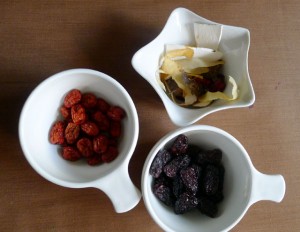
Chinese Herbs
Most people think of confinement (a period of 30 days of recuperating after childbirth) as a rather smelly and icky ordeal where the new mother is not allowed to shower at will, drink plain water, or venture outdoors. At least that’s how one usually does confinement here in Singapore.
My recent one was my third time so in many ways I knew what to expect.
During the first few days in the hospital, I didn’t shower or wash my hair. But I kept my hair clean with a dry shampoo and wiped my body down with a microfiber cloth and warm water.
When I got home, I restricted myself to showering every other day using water boiled with a Chinese herb that helps to remove wind. Thankfully the weather was cool so I didn’t feel uncomfortable at all, even on no-shower days.
In place of water, I drank red date tea, made by boiling red and black dates, dried longans and other herbs in water. This drink has a sweetish taste and the red dates are meant to replenish blood and aid overall recovery, so this is the easiest practice to follow, IMHO. When my red date tea ran out (usually by night-time), I would make a fresh brew of fennel tea, to help with milk supply.
Traditional confinement diet usually encompasses cooking with loads and loads of ginger, sesame oil, and various other Chinese herbs for specific benefits to the postpartum body.
For the first one to two weeks, I ate simple steamed or boiled dishes like steamed fish, fish papaya soup (great for boosting breast-milk) and chicken stir-fried with ginger and black fungus.
Subsequently I had tonic soups too, such as black chicken soup double-boiled with Dom Benedictine.
I avoided cold drinks, vegetables, fruit and bread as the Chinese believe that these lead to more ‘wind’ in the body, which is generally not beneficial as it affects our joints and digestive system.
How did I cook all these nutritious meals? Well, it’s common for new mums to hire a confinement nanny (who stays over at your house) to cook and clean and care for baby during the first month. But as we recently hired a domestic helper, I just provided her with recipes and a rough meal plan so that she knew what to prepare each day.
Joshua, our latest arrival, was sleepy throughout the entire first month which worked out well for me as I could catch up on sleep during the day-time. So I would say my biggest challenge was adjusting to a new routine, which at one month after birth is non-existent.
The other major challenge was coping with the older kids. As I was busy either breastfeeding, caring for myself, or resting, I barely had energy left over for Vera (5 year old) and Javier (3 year old). It helped that the hubby took them out to play on the weekends, and on weekdays when he got home early, but it didn’t alleviate my guilt. As far as I could, I tried to involve my older kids when I was busy with the baby. Obviously they can’t change diapers, but they were pretty good at fetching things and helping to put soiled clothing into the laundry basket. The big sister was especially helpful in distracting him when he was cranky or crying. She also helped to rock the rocker when he needed a nap, and pop his pacifier back whenever it dropped. Sometimes when baby isn’t due to sleep, I’d read them a book while breastfeeding. And on good days when everything fell into place, I tried to do simple activities that they enjoyed, such as painting, art and craft, and bringing them to play with their skate scooters at the nearby park.
For self-care, I followed the age old advice – sleep when baby sleeps. I kept visitors to a minimum so I could focus on caring for baby and getting sufficient rest.
Before I knew it, the month was up. We had a lovely celebration for Joshua’s one-month birthday, which over here is a pretty big thing. And everyone congratulated us for surviving life with three. But as you know, the journey has only just begun…
How did you rest and recuperate after childbirth? What traditional practices do you follow?
Photo credit to the author.
June, born and bred on the sunny and sometimes rainy shores of Singapore, is a mother of two - a chatty 4 y.o. girl and a toddler boy who babbles. She works part-time as a communication consultant, and she is deeply passionate about family, writing, faith, and good old-fashioned love. She can be found on her blog, Mamawearpapashirt.
More Posts

 While I still have the opportunity to write another post for the WMB community before leaving Laos later this year, I feel compelled to tell you about child nutrition and the problem of stunting in Laos because stunting is a seemingly invisible problem that can go unnoticed unless special attention is drawn to highlight the issue.
While I still have the opportunity to write another post for the WMB community before leaving Laos later this year, I feel compelled to tell you about child nutrition and the problem of stunting in Laos because stunting is a seemingly invisible problem that can go unnoticed unless special attention is drawn to highlight the issue.












 I was mentally sabotaging my morning run before the day even started. I laid in bed the night before thinking about how I was getting to sleep too late after eating too much junk when I knew I was coming down with a cold. I had not set myself up for success and felt guilty. I tried to tell myself if I was that beat tomorrow, I would skip it. I woke up in the middle of the night twice for other reasons but couldn’t help but think of how I tired I would feel come morning.
I was mentally sabotaging my morning run before the day even started. I laid in bed the night before thinking about how I was getting to sleep too late after eating too much junk when I knew I was coming down with a cold. I had not set myself up for success and felt guilty. I tried to tell myself if I was that beat tomorrow, I would skip it. I woke up in the middle of the night twice for other reasons but couldn’t help but think of how I tired I would feel come morning.




